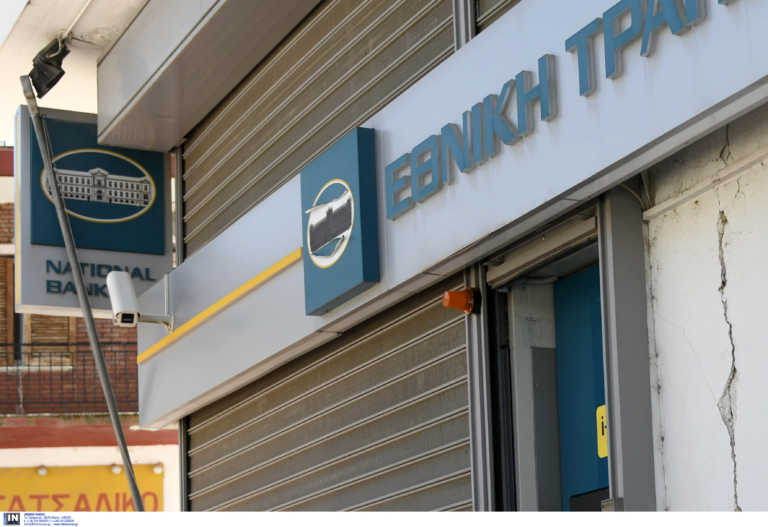The forecasts for the Greek economy with its management are positive National Bank to proceed with a review of the rhythm development of our country for 2021 at 7.5% from 5.7%.
According to an analysis by the National Bank, GDP growth in the second quarter of 2021 (+ 16.2% per year and + 3.4% compared to the first quarter of 2021 – seasonally adjusted data) exceeded expectations even of the estimate resulting from the EIB High Frequency Index (forecast for GDP growth of 13% per year in the second quarter.
The recovery, analysts say, took V-shaped characteristics, with GDP in absolute terms returning to the levels of the second quarter of 2019, both at fixed and nominal prices.
Analysts say that while this performance should obviously not be seen as a reversal of the pandemic – as it has been helped by a slowdown in consumer demand in recent months and the continuing impact of government measures – it is still a very optimistic message about the potential of the economy, the resilience of the business sector and the effectiveness of budget support.
The recovery is notable for the additional reason that the contribution of tourism in this quarter was still limited, as the opening of the tourism market took place in mid-May, while the performance in June was still weak.
Consumption and investment played a key role in contributing to GDP growth in the second quarter of 2021, as approached by the final expenditure structure in the economy.
More specifically:
• Private consumption increased by 13.2% per year (or by € 3.6 billion compared to the second quarter of 2020), contributing 9 percentage points to annual GDP growth (ie 55% of total growth), in compared to the corresponding quarter last year when the strictest restrictions were applied during the pandemic and was only 3.3% from its level in the second quarter of 2019. This result was contributed by the realization of household expenditures previous quarters due to uncertainty and constraints.
• The role of protection provided by support measures for disposable income and employment was crucial, while the labor market response to the opening up of sectors of economic activity was dynamic, enabling the smooth withdrawal of these measures. Unemployment (seasonally adjusted) fell to 14.2% – a 10-year low – in July and employment grew at an accelerating rate (+ 4.8% per year in July from + 1.8% per year in the second quarter of 2021). As a result, labor income increased by 1.6% per annum in the second quarter of 2021, compared to -4.9% per annum in the first quarter and -1.1% per annum in the whole of 2020.
• Fixed capital investments continued to exceed expectations, increasing by 12.9% per year, and added 1.5 percentage points to the annual GDP growth in the second quarter of 2021. It is emphasized that in the same quarter, investments, in absolute terms, exceeded by € 0.8 billion in value in the second quarter of 2019, and that both the first quarter of 2021 and the fourth quarter of 2020 were also higher than in the first quarter of 2019 and the fourth quarter of 2019 by 0.3 and 0.2 billion euros, respectively.
• Exports of goods accelerated further to + 17.1% per annum, at stable prices, in the second quarter with an outperformance of exports of non-fuels which reached a new record high and as a percentage of GDP (estimated at 14.5% versus 19.2% for all freight exports). This development confirmed their consistent upward trajectory, which was even strengthened during the pandemic. Exports of services increased by 29% per year amid a rapid recovery of tourism from a very low base (increase in tourist arrivals by 320% per year in the second quarter). Net exports (exports minus imports), however, had a negative contribution of 1.2 percentage points to the change in GDP in the second quarter, due to the also strong increase in imports of goods and services by 22.5% per year.
Who is the protagonist of GDP growth
The significant increase in gross profitability in the whole business sector (including sole proprietorships), as approached by gross operating surplus and gross income, was the protagonist of GDP growth in terms of the structure of income incomes in the economy. In particular, gross operating surplus and gross income increased by 23.5% year-on-year, with its share of GDP reaching 53% – the highest point since the fourth quarter of 2013 – reflecting the estimated increase in gross operating surplus from business at 31% of GDP and gross income at around 22% over the same period. This development underscores the ability of competing firms to take advantage of rapidly improving economic conditions. The trend was probably also supported by the increased ability of many smaller companies to benefit from the general increase in sales.
The above developments lead to a significant upward revision of the National Bank’s estimate for annual GDP growth to 7.5% in total 2021, from a previous estimate of 5.7%, with GDP growing by 12% annually in the third quarter and 5 , 5% per annum in the fourth quarter of 2021, with a stronger impact than epidemiological uncertainty. This uncertainty cannot be removed as long as the vaccination coverage does not significantly exceed 70% of the population of Greece, in line with the developments in the euro area where in some countries it already exceeds 80%, the analysis states.
Source of RES EIA
The article National Bank: Upward revision of the growth rate to 7.5% for 2021 published in NewsIT .
